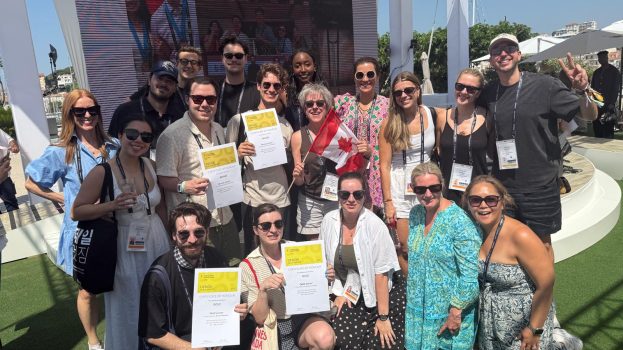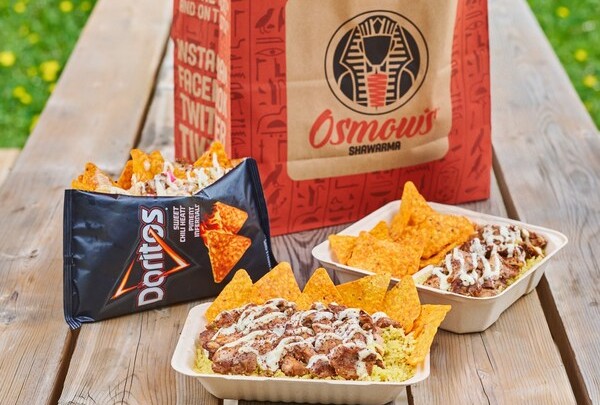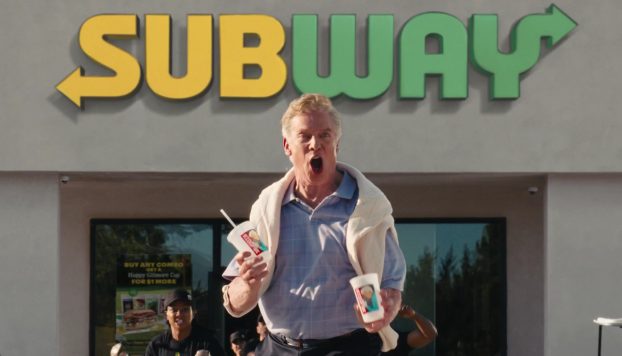This week we’re profiling our six Marketer of the Year winners. First up is Jason Doolan, who was voted the overall winner through the 2015 Marketer Survey. Stay tuned all week to read the other profiles.
This story appears in the December/January issue of strategy.
Cereal marketing tends to conjure up images of cartoon leprechauns and bees stealing bowls of breakfast. But if you’re working with brands that have been around for 60 years, there’s also an emotional connection at play beyond cute characters.
“When a brand has been around that long, there’s something in its DNA that’s already working for the consumer,” says Jason Doolan, director of marketing at General Mills. “We don’t have to walk away from what’s made us successful in the past, and taking a modern lens to that and putting values that had been hidden out front is what’s really exciting.”
In a category that has alternated between modest gains and single-digit losses year-over-year since 2011, General Mills had five points of share growth since Doolan took on marketing for cereal 10 years ago, thanks in part to a “purpose-driven” approach.
“With so many options, any advantage you have based on features and benefits isn’t going to last long, so what makes a difference with today’s consumer is they want to reward brands that share their values,” Doolan says. “This allows us to truly take a stand and live our values as a brand. It comes with a lot of risk, but when you get it right, the consumer will reward that.”
Nowhere is that guiding principle better exemplified than with “The Cheerios Effect.” It was the company’s first masterbrand campaign for the family of Cheerios products and explored the different ways real people – from a gay couple and their adopted child, to a mixed-race couple, to a marriage between a disabled and able-bodied person – were able to come together and form family bonds, based on the scientific principle that objects floating in liquid (like Cheerios in milk) are attracted and come together.
 “This is a brand that is multi-generational, so we had told those stories about people making connections in all our past creative in some way,” Doolan says. “[But what was] the modern, contemporary way to show that those values are still meaningful and important? That’s when we realized we need to help people see that same topic in a fresh way by showing it in relationships they weren’t used to seeing in a commercial.”
“This is a brand that is multi-generational, so we had told those stories about people making connections in all our past creative in some way,” Doolan says. “[But what was] the modern, contemporary way to show that those values are still meaningful and important? That’s when we realized we need to help people see that same topic in a fresh way by showing it in relationships they weren’t used to seeing in a commercial.”
The campaign’s inclusivity did attract some derision as the world took notice. But the voices on social media claiming they had bought their last box of Cheerios were a minority.
“If you take a stand based on principle, it doesn’t matter what people say, they can’t touch you because it’s what you believe in and it’s ultimately the right thing,” Doolan says. “It’s when you don’t take a firm position that you’re just flapping in the wind.”
“The fact that you’re standing for something means you’re going to have people that disagree with you,” adds Wendy Morgado, VP and client lead for the General Mills account at Cossette, which worked on the campaign. “But to do that work, you need to have clients that are willing to be okay with that happening and stay true to the values of the brand, because connecting with the consumers that share those values is ultimately what you’re trying to do.”
“The Cheerios Effect” not only provided a 5% lift in brand volume in its first three months, but earned 90 million social impressions, 3.7 million video views, 670,000 visits to the campaign microsite and double the normal TV ad lift.
Morgado says that working with a client willing to take risks opens up creative possibilities and prevents a brand’s purpose from becoming watered down to appeal to everyone. Campaigns that Doolan led for Lucky Charms, Multi-Grain Cheerios and Peanut Butter Cheerios also demonstrate this risk-taking.
During World Pride celebrations in Toronto in 2014, the “#LuckyToBe” campaign encouraged young adults, many of whom saw the brand as representing their childhood idealism, to share on social media why they were lucky to be the person they were. The campaign, by Diamond Integrated Marketing, resulted in 1.1 million impressions and a 6% sales growth during Pride on only a $125,000 budget.
This summer, an anti-“dietainment” campaign for Multi-Grain Cheerios refreshed an anti-dieting platform (originally launched in 2013) by shining a light on how often young girls are exposed to harmful messages about how they should strive for the “perfect body.” The platform has resulted in a double-digit lift in sales since it launched.
[iframe_youtube video = “cP8yLOEaZ5A”]
And for Peanut Butter Cheerios, Tribal Worldwide’s “#HowToDad” showed the weird things dads have to put up with, which might not have been as socially disruptive, but was certainly a departure in the typically mom-focused cereal category and got away from the “dad as stumbling buffoon” trope often used in marketing products to women.
“Jason is willing to take risks and do things he knows not everyone is going to agree with, and with big brands,” Morgado says. “Sometimes clients are only risky when they’re using small brands with small budgets, but he’s doing it with Cheerios.”
 “We were doing really decent, by-the-book campaigns for a lot of years, and we were getting no further than second base,” Doolan says. “If we’ve learned anything in CPG in the last few years, it’s when your brand is caught somewhere in the middle, you’re just going to be ignored. When you’re big and you’ve got a lot to lose, and consumers start saying, ‘Yeah, you’re reliable and you give good value, but I don’t know what you stand for,’ that can be scary. Especially when, more than ever, entrepreneurs can launch products that compete against us by taking that stand right out of the gate.”
“We were doing really decent, by-the-book campaigns for a lot of years, and we were getting no further than second base,” Doolan says. “If we’ve learned anything in CPG in the last few years, it’s when your brand is caught somewhere in the middle, you’re just going to be ignored. When you’re big and you’ve got a lot to lose, and consumers start saying, ‘Yeah, you’re reliable and you give good value, but I don’t know what you stand for,’ that can be scary. Especially when, more than ever, entrepreneurs can launch products that compete against us by taking that stand right out of the gate.”
To compete, the brand had to go back to the beginning. In 2014, the marketing team at General Mills embarked on what Doolan calls a “mining exercise,” which involved looking at the company’s entire marketing history to discover what values it has been putting forward, plus examining the ways consumers were interacting with the brands.
The company has facilitated this by shifting the majority of its research dollars from the back end (confirmatory research and performance measurement) to the front end, creating a tool kit that allows the marketing team to develop fuller consumer insights from the outset. That way, strategy development is guided by the consumer’s intuition, instead of by the results of the previous campaign.
“You’re not testing the execution, you’re trusting that the execution will be true to the strategy that you developed from more fleshed-out consumer learning,” Morgado says. “For Multi-Grain Cheerios, it’s been almost three years and we’ve never tested the creative. We monitor ROI and how digital is performing to course-correct, but we’re not testing the creative itself, which is unusual in big CPG. That’s because [the client is] making sure we’re understanding the consumer and then spending the right amount of time coming up with the strategy.”
Morgado also says Doolan is highly collaborative with those he works with, while still giving them the time to develop and “get excited about” what they’re creating. In particular, Doolan credits Amanda Hsueh, associate director of marketing, as being vital to General Mills’ recent cereal campaigns.
“I’m a bit of dreamer, she is a consummate pragmatist, and it takes both to get great work,” Doolan says. “She is relentless about delivering transformative work, and she was critical in creating each of these campaigns.”
Doolan, who began his career at General Mills, led the cereal portfolio up until July, when he traded spots with Emma Eriksson, who was running snacks and meals. His new portfolio includes a similarly well-established roster of brands, such as Nature Valley, Old El Paso and Fibre One.
He has also been tasked with digital marketing and brand design duties for the company’s entire portfolio. While his efforts on that front are still in their early days, Doolan says he wants to increase the skill level around digital tools in the company’s marketing department to ensure it stays leading-edge and, true to his record, find more efficient ways to make more personal and thoughtful connections.
Old El Paso presents a familiar opportunity for Doolan to create a new platform, as the idea of a family gathering around a shared plate of Mexican food is another kind of “warm connection” he is figuring out how to express.
On Nature Valley, he is inheriting a platform that positioned it as a snack with a connection to nature. This summer, a “#RediscoverNature” video showed parents and grandparents reliving memories of the outdoors and expressing dismay when their children describe their favourite pastimes as ones revolving around videogames, phones and computers. The campaign, by Cossette, earned over three million views online.
“I think it’s the most successful campaign General Mills advertising has ever done, and damn I wish it was on my resume,” Doolan says of wanting to build on the platform, developed during Eriksson’s tenure. “The tension point about the next generation not having a connection to nature is so real, and it was always there. We just put a spotlight on it and moved it from the back of the brain to the front. That’s a powerful thing to be able to do for consumers.”
Even as General Mills launches new options in both snacks and cereals that look to cater to more health-conscious tastes (the company released 11 in the last fiscal year), it doesn’t seem like Doolan will be resting on the appeal of trendy products to get by.
“When you’ve tasted campaigns where you feel like you made the world a better place, you never want to go back and waste your time with features and benefits. When I meet with consumers, I know our products’ privileged spot at the table is being put to good use by making their lives better.”
























